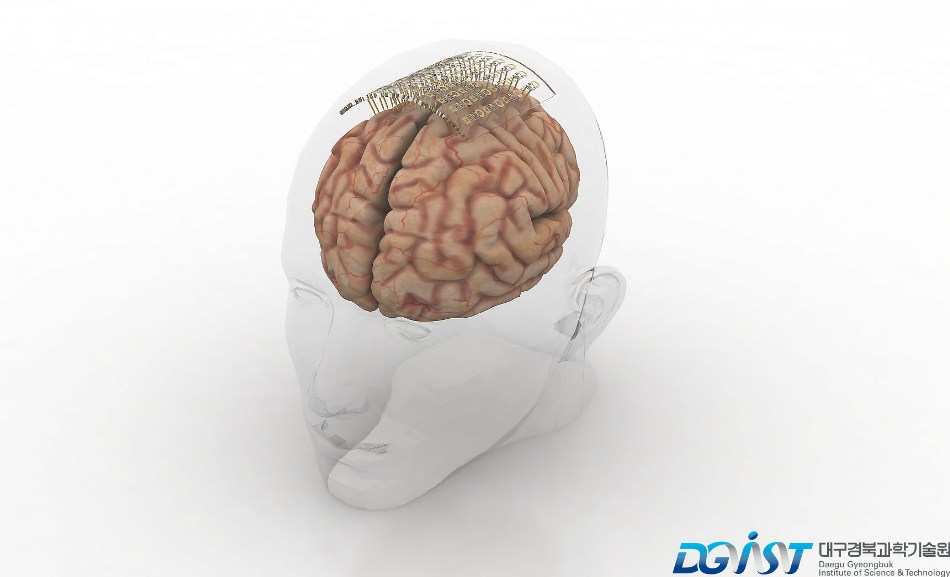Apr 20 2017
 (Credit: DGIST)
(Credit: DGIST)
Researchers from Korea have developed highly flexible neural electrodes with the ability to reduce tissue damage but still transmit clear brain signals.
Electrodes positioned in the brain assist in treating neural diseases such as epilepsy and Parkinson’s by recording neural activity. There is an ever-increasing interest in creating superior brain-machine interfaces including electrodes that can assist in controlling prosthetic limbs. However, advancements in the field have been hampered due to flaws in electrodes — they are comparatively stiff and can harm soft brain tissue.
Developing smaller, soft electrodes with the ability to pick up brain signals is highly difficult as brain signals are very weak. Characteristically, smaller electrodes cannot detect signals properly. To overcome this, researchers at the Daegu Gyeongbuk Institute of Science & Technology in Korea have created flexible and smaller probes that can clearly pick up the brain signals.
The probe comprises an electrode for recording the brain signal. The recorded signal is transmitted to a connector through an interconnection line. The connector transmits the signal to machines that measure and analyze the signals.
The electrode comprises a thin gold base to which tiny zinc oxide nanowires are attached. A thin gold layer is coated on the nanowires, over which a layer of conducting polymer known as PEDOT is coated. The combination of materials not only maintains flexibility and compatibility with soft tissue but also increases the effective surface area of the probe, its conducting properties, as well as the strength of the electrode.
When multiple thin, long nanowires are packed together onto a single probe, the result is a smaller electrode with the ability to retain the effective surface area similar to that of a flat, larger electrode. This denotes that only the size of the electrode is reduced and not its signal detection ability. A mixture of gold and graphene is used to make the interconnection line, where gold is an exceptional conductor and graphene is very flexible. Upon investigation, the probe was observed to detect rat brain signals clearly than a standard flat gold electrode.
“Our graphene and nanowires-based flexible electrode array can be useful for monitoring and recording the functions of the nervous system, or to deliver electrical signals to the brain,” explained the research team, in their paper published in the ACS Applied Materials and Interfaces journal.
Prior to commercial application, the probe has to undergo further clinical investigations. The research team is also looking forward to creating a wireless version of the probe to render it highly convenient for a wide range of applications.